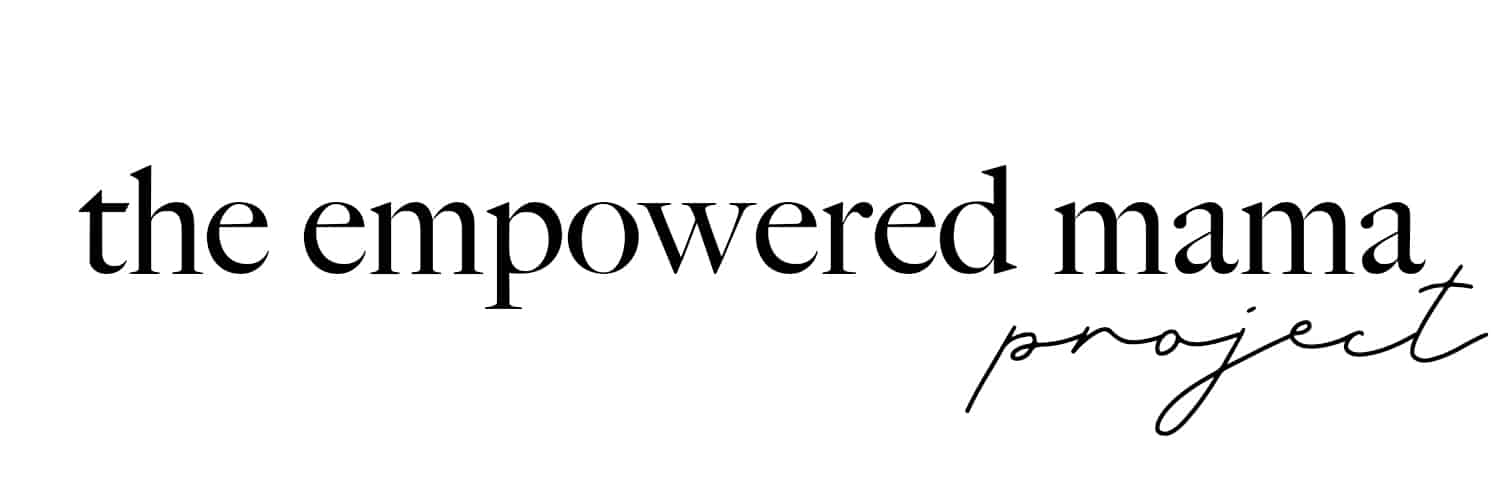If you’ve found yourself here, you’re probably ready to ‘get this kid out!’
If I was your Midwife, you’d be sitting in my office, maybe a bit teary, maybe with lots of questions, maybe a little bit in meltdown mode as you’re well and truly over it.
I’d be listening to you, supporting you, motivating you, reassuring you and just loving on you – promising that you won’t be pregnant forever!
Most women get to this point – usually after 41 weeks, but some are over it as early as 37-38 weeks, and that’s ok!
I’ve even had someone ask for an induction at 36 weeks (yes.. that’s premature and no, I did not).
Ultimately, no matter what methods we try, babies will come when they are ready.
There is no evidence to prove that any one method WILL get you into labour.
Even medical induction won’t guarantee you’ll labour!
So we’ve compiled a list of what’s helpful, what’s not, what the science says, complementary strategies, and what happens if you wait it out. Read on!

What IS Helpful
Waiting & Doing Nothing:
Ok, I know you didn’t find yourself in a “how to induce labour” post to be told to do nothing and wait.
Patience is running thin.
But you need to understand this info first before considering anything else.
It’s the foundation to your knowledge.
Consider it like laying a decent slab before building a house.
It’s essential.
We look at when you can realistically expect to go into labour down below in ‘What Science Says’.
But there’s one thing you can bet money on about the end of pregnancy, if you wait and do nothing, you will go into labour.
That means it’s 100% a sure bet, and therefore made the list of ways to get into labour naturally.
The other reason why the “do nothing” approach works so well, is how the complete surrendering and elimination of all fixation, anxiety, fear or stress positively affects the mind, psyche and therefore hormonal physiology of labour.
That is, you’re in a better place for your hormones to do their thing and get you into labour.
The hormones of labour, particularly for your first baby, are an intricate art.
The body is silently going through transformation to place your hormones just so, to trigger and allow your body to labour.
Just as it did to grow your baby, without any input from your ‘thinking brain’.
We’re a society of wanting to control, plan, manage, risk measure and avoid, and calculate everything.
If you don’t challenge that now, labour and birth certainly will, because no matter how much we try to manage and control it, ultimately it will take its own course.
Using birth affirmations and hypnobirthing tools in pregnancy, no matter how late, is an effective way to overcome fears, worry and the need to control and manage.
That’s why The Empowered Mama Project wrote and designed our own set of printable or printed affirmation cards for pregnancy, caesarean, motherhood, Dads and breastfeeding.
Sometimes, for many different reasons, a Mama may be looking down the barrel of a medical induction.
This may not be her first choice, or her second or third.
One would hope it has been planned for the well-being of Mum or baby, and not the convenience of the care provider.
It’s only natural to want to try everything you can to get baby out before getting to that looming induction date.
Which means sometimes, the wait and do nothing approach isn’t the best option. So here’s what else you can try…
Orgasm & Sex:
We are talking about two different things here – if you can do both, well that’s a bonus.
Orgasm, whether by sex or masturbation surges your oxytocin.
That’s the hormone responsible for contractions.
Ever notice a good orgasm triggers a night of braxton hicks?
Now a once off approach to this won’t necessarily start labour.
So whether with a partner or not, if you’re well and truly over pregnancy, try to find a bit of ‘enjoyment’ to those final weeks.
Semen on the other hand works by softening and preparing the cervix for labour.
How? Not by working like a good moisturiser!!
Semen contains prostaglandins. A synthetic form of prostaglandins is what’s used to medically induce labour.
Nipple Stimulation:
Nipple stimulation, aka nipple tweaking, can increase oxytocin.
Again, the hormone that promotes uterine contractions.
It is something that can also be used in labour to help increase frequency and strength of your contractions.
Some women use an electric breast pump on a gentle setting for nipple stimulation in late pregnancy.
I tend to think this might not work as well as doing it yourself… the functionality is there, but breastpumps can be an ugly, clunky, mechanical and sometimes uncomfortable device.
One wonders how much that actually inhibits the release of oxytocin – the love hormone.
‘Spinning Babies’ Exercises:
There’s not one thing that we can pinpoint to be the reason for labour to start.
There are many factors to it that need to align (see What Science Says below). It’s like all the puzzles to the jigsaw need to come together.
I have seen women at 41+ weeks, walking around with no signs of labour happening anytime soon, even though they are 6-7cm dilated already.
I’ve seen women 1-2cm dilated have their baby only hours later.
Aside from hormones, one of the puzzle pieces that have to align is baby’s position. A baby that’s not in an ideal position can really hold things up.
The Spinning Babies website and their suite of exercises and positions is one I use frequently with my clients, with great results.
The exercises are targeted at optimising the physical relationship between the mother and baby’s body.
You can use them in both pregnancy to encourage a well positioned baby giving yourself the best chance of labour, and also with contractions to promote easier labour and birth.

What Is NOT Helpful
Castor Oil:
Other than being straight up disgusting, castor oil is NOT going to put you into labour.
Few women may swear it worked for them, but realistically, if it did, they were probably going to be labouring soon anyway.
Castor oil is a bowel stimulant. You know the crampy feeling in your lower stomach you get when you’re about to have a loose bowel motion… yeh… it makes that happen.
That tight, crampy, achy feeling, often confused for contractions, is just castor oil doing it’s thing. And it aint pretty.
Pineapple:
Yeh nooo. So the pineapple idea stems from old-wives tales and non evidence-based theory that because pineapple contains the enzyme bromelain, thought to encourage uterine contractions, it could induce labour.
The facts on this one are that small studies have only been done on rats/rat tissues, and that there is NO research evidence to show that pineapple can help induce labour in women.
Even in the rat studies, pineapple didn’t have any effect when ingested orally, possibly due to digestive enzymes.
Curry:
Can curry and spicy foods bring on labour? Short answer… no. Curry essentially is a bowel stimulant (see above point – Castor Oil).
If you happen to labour the night you’ve had curry, it is either coincidence or you’ve stimulated your bowel enough to cause uterine irritability AND your body was going to labour soon anyway.
Being told ‘it’s easier when they’re inside’, ‘enjoy it while it lasts’:
Not helpful, Karen! Yes, it may be true for some women that a baby in-utero is a lot easier than having a newborn, but no one wants to be told that, and no one wants to be told to just enjoy the final days.
In fact, a sure fire way to guarantee you wont enjoy the slow, uncomfortable end of your pregnancy, is being told to enjoy it!
Women often instinctively retreat in the final days/weeks. It’s important to block the negativity, the questions, the unsolicited advice, the text massages “tell baby to come out now, Grandma says so”.
Retreat, retreat, retreat. And if you find this hard, then your partner needs to be your advocate.
Being mentally ready is as much important as being physically ready when it comes to going into labour.

Benefits Of Waiting It Out
Development:
Babies are considered ‘term’ between 37-42 weeks. Your EDB (estimated date of birth) is the 40 week mark.
It’s a calculated guess though.
And as little as 3-5% of babies are born on their due date. In fact, for first time Mamas, most will birth between 41-42 weeks.
Your baby doesn’t stop developing as soon as they hit 37 weeks. The final month isn’t solely for them to merely ‘fatten up’.
Their brain and lungs are still maturing, right up until birth.
If a baby picks their own birth day, meaning we allow our body to labour spontaneously, baby is more likely to have reached their full development.
All the pieces to the puzzle:
It is not know exactly what triggers labour to start, but what we do know is that there are several factors, ‘puzzle pieces’ if you will, that make labour more likely to happen.
The pieces are more likely to be in place when we wait for labour to start in it’s own good time.
One being lung development – put very simply and briefly, babies lungs need to be well developed, for some babies this will be at 37 weeks, for some it will be at 41-42 weeks.
If you wait for spontaneous labour, you’re avoiding making baby be born before they are ready.
Think of it like ripe fruit… it falls off the tree. If we pick it off by hand, it is more likely to be tart and not ripe.
Another puzzle piece is the cervix. I’ve known women to labour as soon as they are 4cm, and I’ve known women to be days away from labour and walking around happily at 6+cm (of course, their labour is much shorter).
The cervix dilates in labour, but needs to do A LOT of ground work first. It needs to shorten from a few centimetres to almost paper thin, and it needs to be 4-6cm before active labour establishes.
Commonly, when women are induced their cervix is not ready! If it was, they’d be in labour.
This is why induction of labour can take several days, and sometimes, doesn’t work at all, meaning a caesarean is needed.
The other puzzle pieces are baby’s position and engagement (how far engaged into the pelvis their head is).
If baby is in a good position, they can usually get their head nice and low into the pelvis.
This means there will be more pressure on the cervix to encourage softening and dilation, and spontaneous labour.
If baby is in a not so ideal position, this process can be hindered.
Waiting for spontaneous labour means you’re giving your baby time to find the perfect position and engage into the pelvis.
Better birth outcomes:
Statistically, women who have spontaneous, physiological (no intervention) labour are far more likely to have an uncomplicated birth, well Mama, and well baby.
Why? ‘The cascade of intervention’ starts like pulling a thread. Something may seem minor, or communicated that way. Eg. ‘We’re just going to break your waters and see if labour starts on it’s own’… but then it can all unravel.
What if… you then don’t start labouring, and baby is now exposed to bacteria and infection risk as the membranes are broken…
And so they want to hurry things along with a synthetic hormone, so you need a cannula…
And you also need a monitor around your abdomen, so your movement is restricted…
And you can’t use upright positions and water to help cope with the sensations of labour…
And your own natural hormones of labour are impeded, so labour slows down…
And the drip gets turned higher, your baby becomes distressed, you have a lot of vaginal examinations and must dilate to a timeline…
And you’re left with a caesarean or forceps or vacuum and severe perineal trauma…
But you walk away feeling like your body didn’t work, thank God for the Doctors and Midwives.
You step into motherhood, the difficulties of breastfeeding, trying to bond and Mother your babe, feeling traumatised and as if your body is broken – you’re not going to feel like a competent, capable, empowered woman who can navigate motherhood.
I hear these stories every single week in my job.
Birth trauma is what keeps me in business, but I’d rather go bust.
There of course will be times when, for the safety of mum or baby, induction of labour will be recommended. It is important that you learn all of the risks of induction AND the risks of waiting for spontaneous labour, so that you can make an informed choice.
Something that can help your decision making is asking your health care professional what the ‘absolute risk’ is… that is, the numbers…
One can say ‘increased risk of stillbirth’…. scary!
OR they could say ‘increased stillbirth risk from 1:1000 to 2:1000 (better) OR they could say ‘0.1% risk of stillbirth increases to 0.2% risk’.
See how LANGUAGE makes a huge difference in your understanding?

What About A Membrane Sweep?
A membrane sweep is when a Doctor or Midwife, whilst performing a vaginal examination, sweeps their fingers around/inside the opening of the cervix.
It is sold to women as something that can help them go into labour, however its efficacy is thought to be 50/50, or even less.
The most recent Cochrane review on membrane sweeps suggests it would be effective for 1 in 8 women.
It then goes on to suggest that it likely brings labour on sooner by only 24hours.
We also know that if a membrane sweep doesn’t work with in 24 hours of having it, it’s not going to. So some women fall down the trap of having numerous sweeps.
Membrane sweeping is NOT a natural method of induction. And it certainly is an intervention.
However, if staring down the barrel of a medical induction of labour, one can understand why a woman would be keen to give anything a go, and may accept the risks of having a membrane sweep.
So what are the risks?
Membrane sweeps can cause vaginal bleeding, uterine irritability (that doesn’t become labour but keeps you awake all night), comes with a risk of your membranes being ruptured by the care provider (see cascade of interventions above).
It can be uncomfortable and embarrassing, and can leave you vulnerable to pressure to have a medical induction because ‘your cervix isn’t dilated’.
Also, knowing ‘the numbers’ can get in your head and create anxiety.
Women understandably want to be at least a couple of centimetres dilated, or to be told that their cervix is soft and ready.
BUT… if you’re having a membrane sweep, it’s probably because you’re not in labour, and if you’re not in labour, your cervix likely isn’t going to be dilated, soft and ‘favourable’!
Then there’s infection. Any vaginal examination, even with sterile gloves, also introduces bacteria to the cervix and increases risk of infection, though if your waters aren’t broken this may be minimal.
As you can see, there is a lot to discuss about membrane sweeps.
But commonly, women just get offered one like it’s a safe, simple thing to do that will put you into labour.
Women need to be supported in informed decision making around whether they will or won’t have a membrane sweep, and Midwives and Doctors should respect their individual circumstances and wishes.

Complimentary Strategies
Red Raspberry Leaf Tea/Tablets (Herbal): RRLT is a uterotonic women use to promote faster birth and postpartum recovery. It’s not proven to induce labour.
Acupuncture & Acupressure: A 2017 Cocharane review of randomised controlled trials found that acupuncture had some benefit in improving cervical maturity.
No benefit was found from acupressure in the trials examined.
Evening Primrose Oil: Some women use EPO, either taking the tablets orally or placing them in the vagina, to soften and prepare the cervix.
It won’t induce labour however, and there are few studies showing its efficacy, and some that suggest it may increase blood loss.
Such studies may not be of high quality evidence, but if you are considering using EPO, it’s best to discuss with your Midwife first.
So there you have it! The ins and outs of natural ways to induce labour, the benefits of doing NOTHING and waiting, what works and what doesn’t.
Every woman and baby has an individual pregnancy and health needs, so there is no one-size fits all approach, and this article does not replace health care advice from your Doctor or Midwife.


